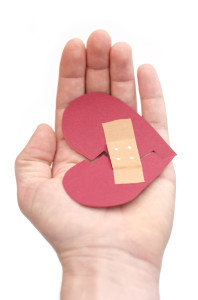Scar development & structures
We all have scars and they can form anywhere on the body. An open wound on the skin needs to occur for a scar to develop i.e. after an accident a graze emerges on the skin or after a surgical procedure with a scalpel or a sharp cut wound. The reasons for scar development are many and skin injuries that leaves a wound is common and affects us all. A scar is a natural part of the wound healing process in the skin´s upper and lower bearings, epidermis and dermis. Scar tissue is made up of the same protein, collagen fibers, as the undamaged skin, but with a simpler collagen structure which causes a scar to stand out, both in form and color.
People have different susceptibilities to scarring, some get big and thick scars i.e. keloids, while others may develop fine and discrete scars. Even the color can vary anywhere from white to dark brown. The reasons to why scars are so various in color and shape is because of different factors that include: Severity of scar damage, skin type, ethnicity, age, location on the body and sun exposure. Learn more about the different types of scars further down the page!
In elderly people, the wound healing process is usually slower, while the skin of younger people more often over-produce collagen during the healing, leading to larger and thicker scars.
Scars that are located on or near active muscle groups, where there are great tensions i.e. chest, back and leg area tend to spread out and become larger and more visual than in other areas on the body. People who have African or Asian descent with thick skin are more than usual affected by coarse scarring than those of European descent.
Many are not aware that there is an effective and well-documented treatment against different types of scars, including new and old scars with the Shamá method® Scar Treatment. Scars are removed alternatively corrected to the point that they are no longer noticeable.
Hyperpigmentation & Hypopigmentation – Discolored & White Scars
Hyperpigmentation (post-inflammatory) can occur during the scarring process. This means that the skin area that will become a scar overproduce melanin pigment, that which gives the skin its natural skin tone. The newly developed scar is then darker in tone than the unharmed skin around it. Brown spots or pigment spots, common among people with colored skin, occur usually after old age and sun exposure.
Hypopigmentation can affect some people during the scar healing process and results in a lack of color on the scar. The scar is white and stands out from the rest of the skin. The cells that produce melanin has lost their ability because of the external damage that caused the scarring. Sun exposure can lead to white spots, injured skin that no longer can produce melanin. White skin spots and scarring is common among fair-skinned people.
Each hypo- or hyperpigmented scar is unique in color and shape, which means that every scar removal method is different! Treating discolored or white scars with Shamá method® is part of the treatment process. Most of the treatments we offer include correction of discolored and white scars.
Scar removal – Different types of scars
Hypertrophic Scar Removal with Shamá method®
When overproduction of collagen occurs during the healing process of a wound, a hypertrophic scar can emerge. The scar is raised like a lump over the undamaged skin. Usually a hypertrophic scar is a bit larger in size. The color of the scar shifts raging from white to dark brown, depending on the individuals own skin tone and if hypo- or hyperpigmentation occurred during the healing process. Hypertrophic scars are usually formed within 4-8 weeks after a wound infection or after the wound heals. It is recommended to start treatment as soon as the wound has healed. Every hypertrophic scar is unique in color and shape which means every scar process of treatment is different!
Keloid is a coarser form of a hypertrophic scar and characterized as large inflated scars. The color of keloid scars ranges from white to dark brown depending on the persons own skin tone and if hypo- or hyperpigmentation occurred during the scar healing process. Keloids develop more often on dark-skinned individuals with thick skin than on fair-skinned. A typical feature is that keloids tend to be enlarged beyond the original size. Read more about hypertrophic scars and keloids with Shamá method® in the page about Keloids here!
Atrophic Scar Removal with Shamá method®
Scars that are sunken recess on the skin. They can be small as grains or the size of a thumb. These occur when underlying fat and muscle which normally gives support to the skin is lost. Acne scars, scarring after chickenpox and sunken scars after surgical breast surgery are typical atrophic scars. Every atrophic scar is unique in both form and color which means that every scar treatment is different. How atrophic scar treatment with Shamá method® is proceeded and more thoroughly explained, please rea the pages about Acne scar and Chickenpox scar.
Stretchmark removal with Shamá Stretchmark Treatment™
Stretchmarks are a type of scarring that is usually formed when the skin is stretched or strained very quickly. It is common during and after pregnancy and at rapid weight gain or loss. Learn more about stretchmarks with Shamá Stretchmark Treatment™!


